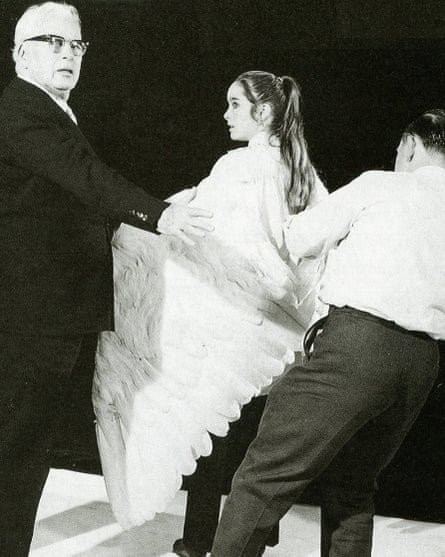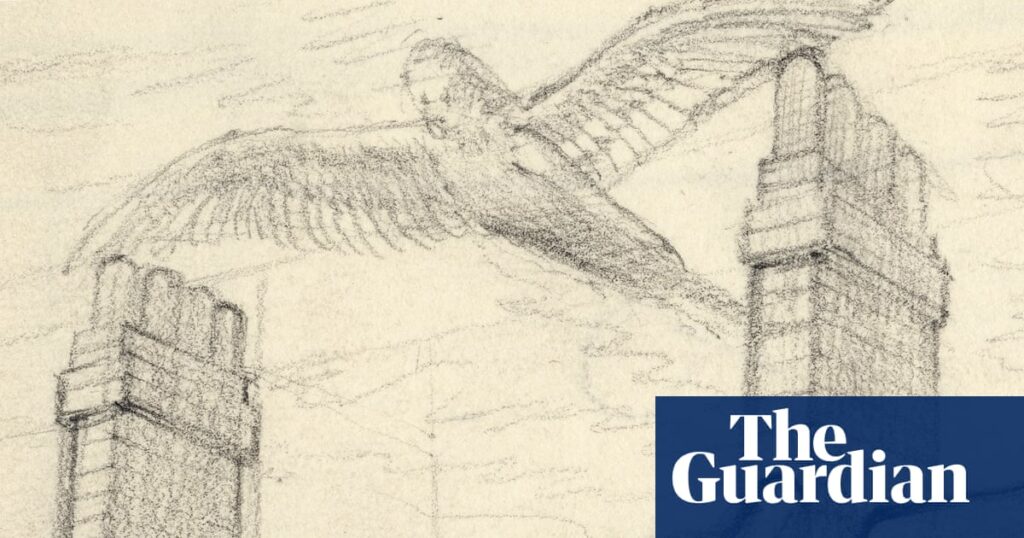He rose from the slums of Victorian London to become arguably cinema’s first great comic artist, with The Great Dictator and Limelight among his masterpieces.
Now the script of Charlie Chaplin’s unfinished final film is to be published, having been pieced together from drafts, storyboards and sketches, on which he had been working before his death in 1977, at the age of 88.
Titled The Freak, it is a fantasy about “a beautiful creature with wings … a bird with a human body”, as Chaplin wrote of an otherworldly female creature named Sarapha, which has the power to cure illness and bring peace to the world.
The comic genius, who created the Little Tramp with his trademark bowler hat and cane, planned to appear in a cameo role as a startled drunk who watches her fly above him in the London sky over the Houses of Parliament.
The surviving working papers for The Freak are more extensive than for any of Chaplin’s other films. They reveal that he was close to shooting it. They detail everything from scene breakdowns to special effects sessions, including wings for Sarapha. There are also financial projections, minutes of technical meetings and production schedules.
David Robinson, Chaplin’s official biographer who has written the book containing the material, said: “It’s a shame that it wasn’t finished because it could have been a marvellous film.”
For the role of Sarapha, Chaplin had cast his then teenage daughter Victoria, who recalled: “For hours, for weeks, for months, he [Chaplin] studied the movements of birds in flight – the living mechanics of wings. He watched films where men and women soared through the sky. But the techniques back then did not satisfy him. He wanted to find his own way – crafted, personal – a way to translate the sensation of flight on to the screen. I believe he would have found it. But time clipped his wings. Charlie Chaplin never brought his vision to life.”
Sticking Place Books will publish The Freak: The Story of an Unfinished Film this weekend.
Paul Cronin, its British publisher, said Chaplin created a heroine as timeless as the Little Tramp, an outsider: “Chaplin made that very clear in his production notes.”
This is the first time the script has been published in English, in its original form. It had appeared only in Italian in 2020, in a limited run by the Cineteca di Bologna, which has catalogued the entire Chaplin Archive.

Cecilia Cenciarelli of Cineteca di Bologna, who has edited the forthcoming book in a collaboration with the Chaplin family, said The Freak had been largely unknown even to Chaplin scholars: “We found ourselves handling hundreds of pages of this film we’ve never heard anything about and turned to David [Robinson’s] ‘bible’, Chaplin: His Life and Art, for clarification, only to realise that The Freak was barely mentioned.”
Among the papers are casting notes marked “confidential”, listing Robert Vaughn, James Fox and Richard Chamberlain as contenders for the lead role of an English professor who befriends Sarapha after finding her on his roof, injured and unconscious.
In one scene, she tells him that she hates her wings: “I don’t like mystifying and frightening people … I am afraid of everyone and everyone is afraid of me.” In another passage, Chaplin wrote that Sarapha “loved him in spite of the fact that he was without wings”.
In 1969, Chaplin was in London, exploring ways to pull off the flying scenes. There were talks with companies that created flying effects for the stage as well as film special effects experts, including those at Shepperton Studios.
The new book includes an interview with one of the artists, Gerald Larn, who created 150 drawings showing the wings and Victoria in flight. He said: “Charlie was very clear and detailed about what he wanted and what he expected from us … We thought it would be a difficult project, but not impossible … The good thing was that we always got feedback from Charlie.”
Arnold Lozano, the manager of the Chaplin estate, described the forthcoming published script as “the first comprehensive presentation of Chaplin’s last, unfinished film project”. He added: “Drawn from nearly 3,000 pages of Chaplin’s words, photographs and designs, along with his own recorded readings and piano compositions for the score, it reveals The Freak as perhaps his final bequest. Unique within his body of work yet still touched by unmistakable Chaplinesque elements, this publication offers a rare glimpse into one of the most remarkable projects of his 63-year creative life in cinema.”

